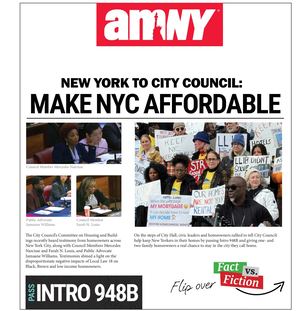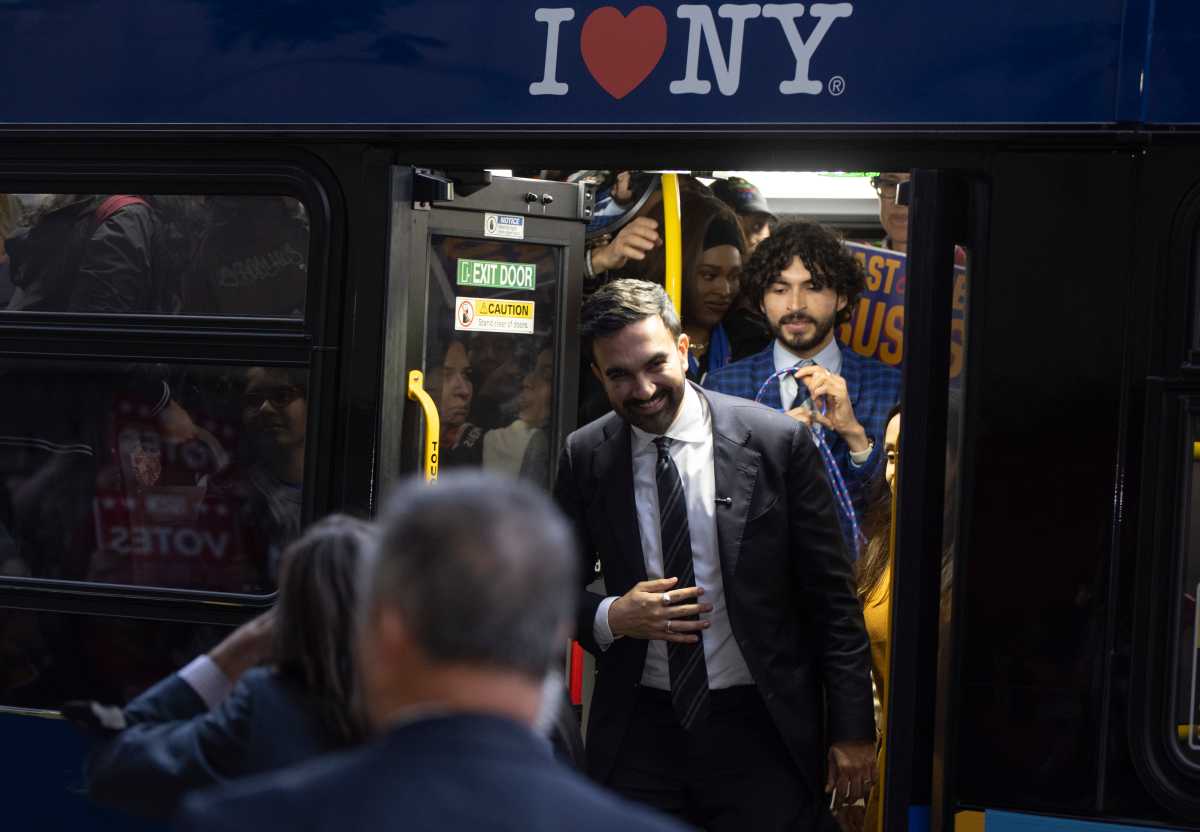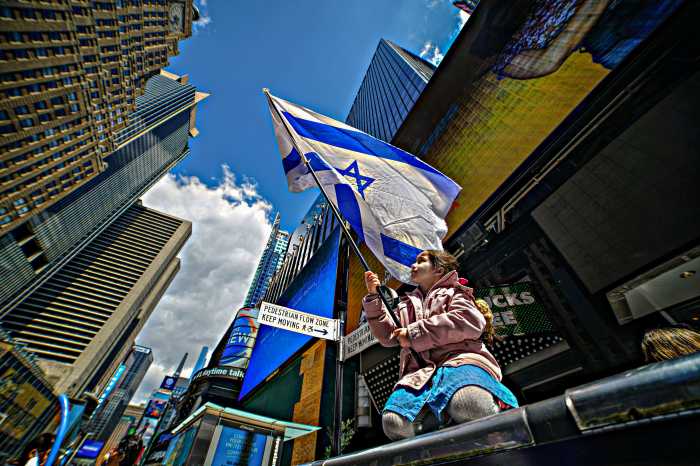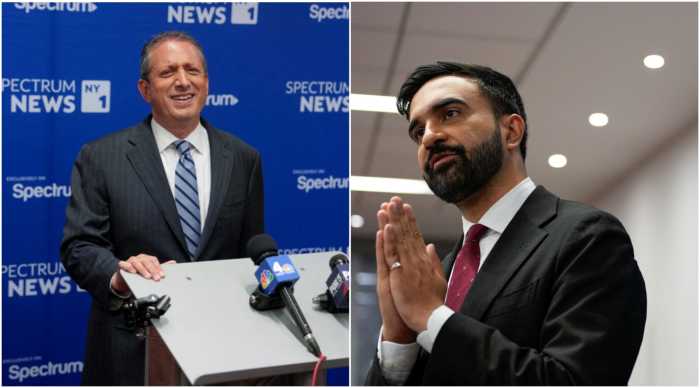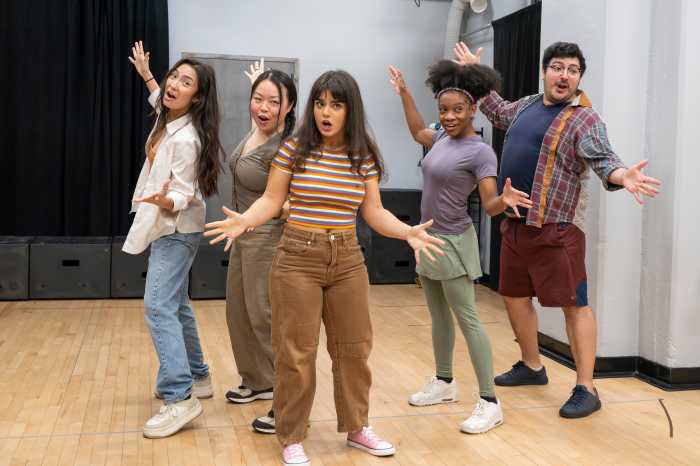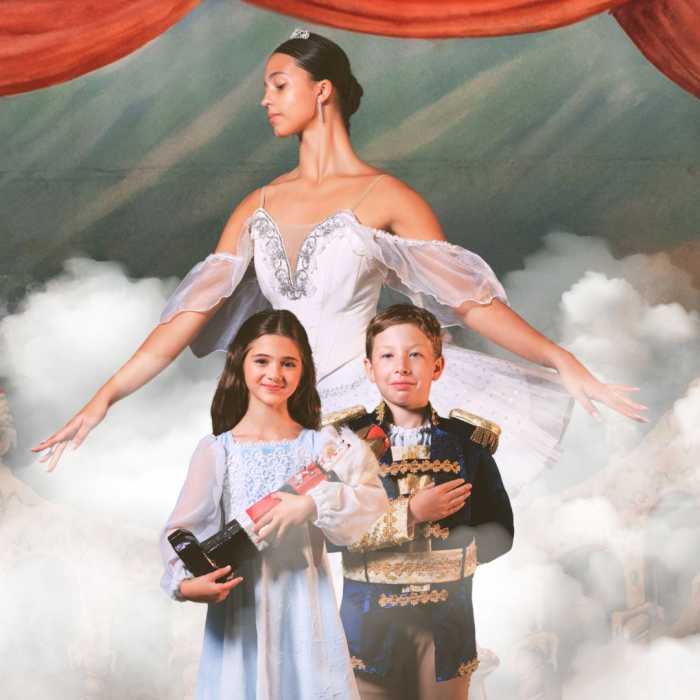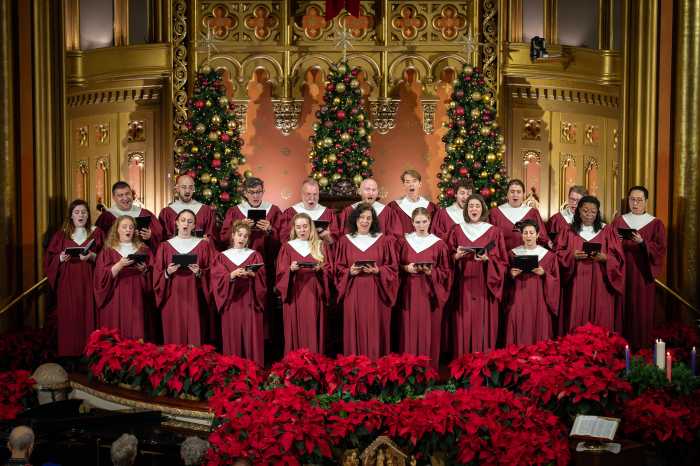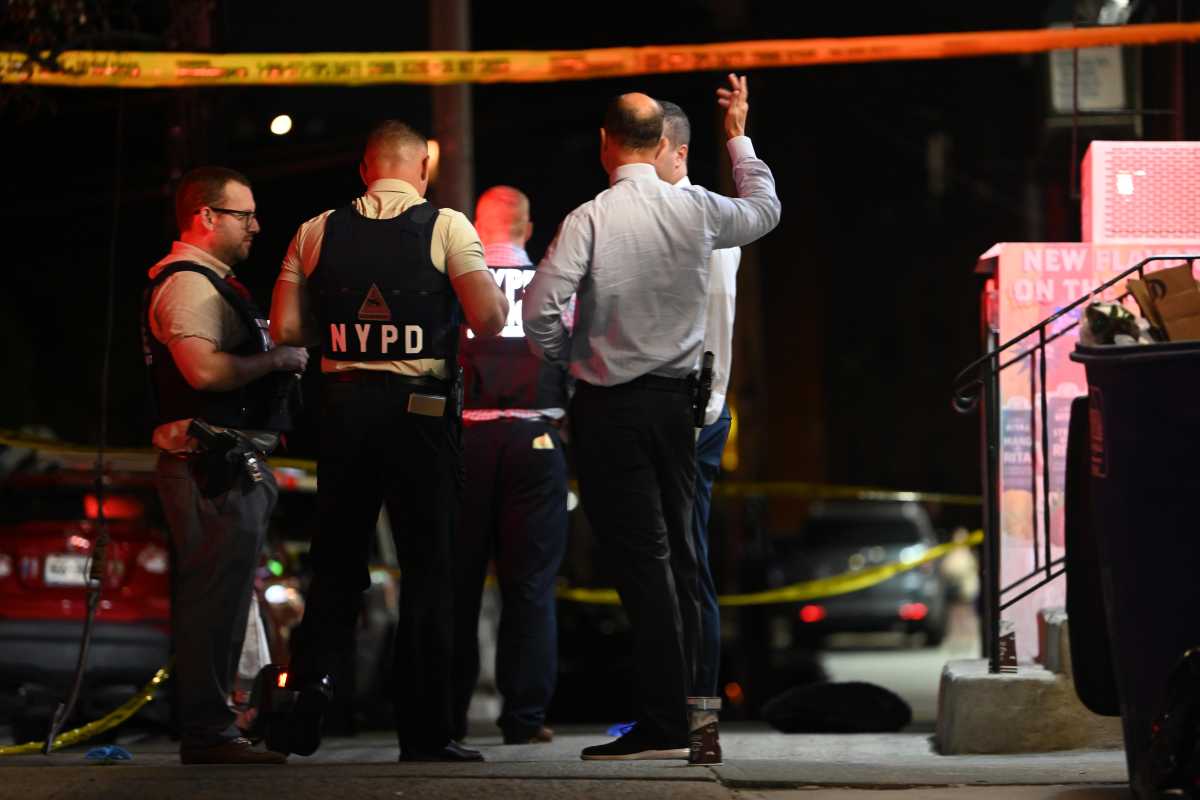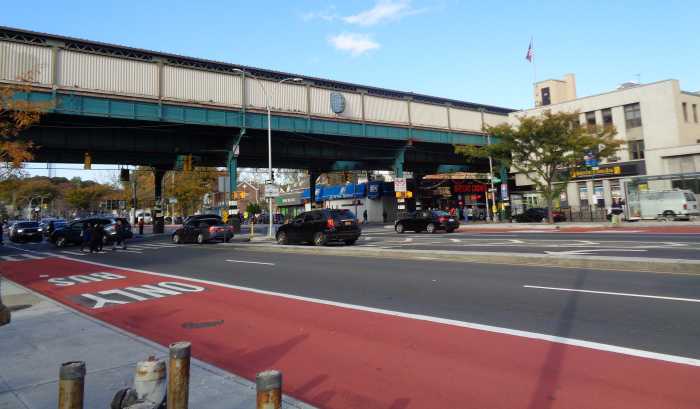As 2025 mayoral race frontrunner Zohran Mamdani champions his ambitious proposal for a free bus system across NYC, a growing number of skeptics and supporters are voicing their thoughts over the plan’s feasibility, funding and potential impact.
More than 1 million New Yorkers ride MTA buses each day. While the idea of fare-free buses has attracted enthusiasm from many of these commuters, critics are raising red flags about the practicalities of implementing the idea.
While the Democratic candidate did not respond to multiple requests for comment from amNewYork asking about his research behind fare-free buses, he has stated that the plan would make buses go faster. No one would have to pay when they board.
“Unlike on the subway, when you pay your fare, you’re doing so on the bus,” Mamdani said during a recent WNBC segment. “The act of doing so or not doing so, it impedes and impacts the ability of the bus to actually operate.”
It is unclear how he would make the buses free — or if he consulted transit groups or economic experts. But he has not been shy about wanting to raise taxes on corporations and “the wealthiest” New Yorkers.
A 2023 study by the city’s Independent Budget Office (IBO) found that fare-free buses in New York City would likely cost at least $652 million a year.
Mamdani’s revenue plan will raise the corporate tax rate to match New Jersey’s 11.5%, bringing in $5 billion, according to his campaign website. New Yorkers earning more than $1 million annually would be taxed a flat 2%, if he wins the mayoralship.
Any tax increase, however, would require state legislative approval, which could be challenging, given that Gov. Kathy Hochul and all state legislators are up for re-election in 2026. Hochul has already ruled out tax increases.
The union weighs in
Another proponent of free buses is comes from an unlikely source: the union.
John Samuelsen, president of the Transport Workers Union International, has appeared in reports supporting the Mamdani bus plan. He explained to amNewYork that the proposal would decrease assaults on bus drivers, while also providing a societal service.
“Nothing is free in life, so we’re not talking about free buses,” he said. “We’re talking about building the cost of the buses into the wider tax bases. Just like we don’t pay for sanitation at the point of service.”
He also said keeping bus drivers apart from fare boxes is “extremely effective” in reducing assaults on bus drivers, as demonstrated in the 2023-2024 free bus pilot program.
“On the issue of safety, it is the massive one point that everyone can agree on that as soon as the bus operator is separated from the payment medium, the assaults plummet,” he explained.
Can the mayor instantly make buses free? Not really.
Nevertheless, at the forefront of the issue is whether the mayor of NYC has the authority to implement such a plan over the state-run MTA. Civics experts say it is not so much about authority as it is about influence and actually having the mechanisms in place to bring the idea to fruition.
The NYC mayor can appoint four people to the MTA board, all of whom represent NYC. But those four appointees are far from the majority of the 23-member board. While they have some say in decisions, in order for the city to achieve free buses, it needs gubernatorial support.
“The MTA board is essentially controlled by the governor. You really need the governor on board,” said Professor Stephen Louis of New York Law School’s Center for New York City and State Law.
The MTA, an agency that has borrowed money, also relies on fares for funding. If the state gives a thumbs down to free buses, it is possible for the city to foot the bill, as was the case with the 7 train extension to Hudson Yards in 2015.
“The MTA did it, but the city paid for it,” Louis explained. “So, it’s possible, if the state isn’t willing to do this or come up with the money, the city could say, ‘Look, we will pay whatever the MTA pays in bus fares.’”
In this scenario, the MTA would have an agreement in place with the city. As another less-likely alternative, Louis explained, the city would take over running the buses.
“The buses run on city streets,” the professor said. “So you can say there is a certain logic that buses could be run by the city. But then, that’s even more complicated because you’d have the workforce that would now be a city responsibility. And the city would not just pay for it, but operate it.”
Do free buses actually move more slowly?
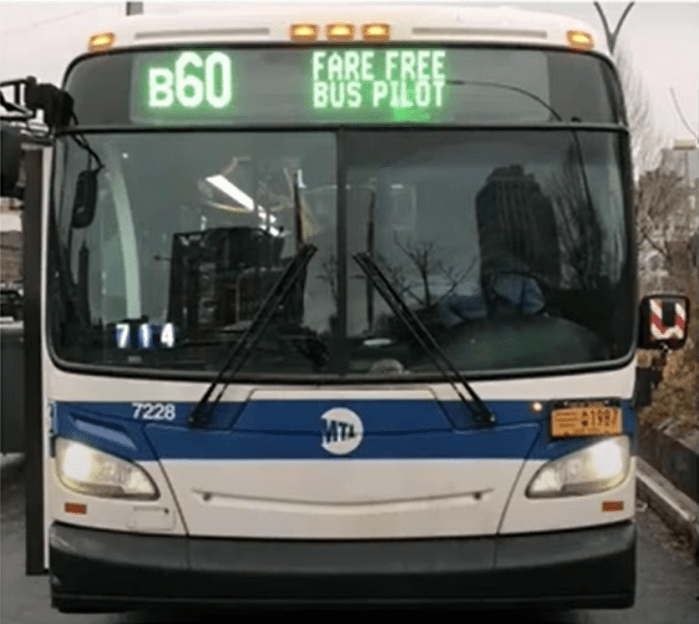
Brian Fritsch, associate director of the Permanent Citizens Advisory Committee (PCAC) to the MTA, echoed concerns about extra costs and operations. Fritsch, who worked on the expansion of Pre-K under former mayor Bill de Blasio — an issue that sparked similar questions about costs — explained that a free bus network in NYC is possible, but there are other factors to consider.
“You’re going to have to hire a lot of new bus drivers, you’re going to have to get new rolling stock, and either expand or secure new depot space around the city, which is always challenging, but it’s doable,” he explained.
Last year, the MTA announced the results of its year-long pilot program that put one free bus route in each borough of NYC. Mamdani, as a member of the state Assembly, helped secure funding for the pilot program in the state budget.
The program concluded with the MTA’s finding that ridership increased on the free routes, and the foregone revenue and related costs totaled more than $12 million over the nine-month pilot period.
It was not fun for riders, either. The free buses made more stops than ones that required payment.
“The numbers showed that it slowed down buses a bit,” Fritsch said. “I think in part because the buses were making more stops than they would otherwise. The MTA felt that people were taking it a lot for shorter stops.”
Christopher Ball, an associate professor of economics at Quinnipiac University in Connecticut, said free buses are economically possible, but echoed Fritsch’s point about slowing down the buses.
“I think it is feasible, whereas Mamdani’s grocery store plan might seem great in the beginning but run into tons of problems. This, at least, you could do,” Ball said. “Although I do not think it will help in the ways he wants it to help.”
He explained that making the buses fare-free “makes no sense” if the reason for doing so is to make the buses run faster, which is a key reason why Mamdani proposed the idea.
“When you provide something for free, you’re just going to get more lines and crowds of people using it,” Ball said. “Usage will go way up, and it is not clear at all that it speeds things up.”
The professor also questioned why the candidate would want to commit to paying a significant amount of money each year to make buses faster when improvements could be made in a one-time deal.
“Another thing you can do is spend a few hundred million dollars once, and maybe add ticket booths in the back,” Ball described as an example. “If your goal is to speed buses up, and you really want to spend a few hundred million dollars, you can do that once and upgrade them or have some modifications.”
Meanwhile, Fritsch at PCAC said it is impossible for him to be for or against fare-free buses without seeing a comprehensive plan in place. Whatever the election brings to NYC, PCAC wants the critical Fair Fares program to stay in place. The discount program provides a critical half-price fare on subways and buses for eligible New Yorkers.
“That’s another big question mark for us. What is the plan on Fair Fares? We’d still like to see it expand considerably, possibly to the railroads and express buses, on top of subways and buses,” Fritsch said. “We have a lot of questions on how that would work in concert with [free buses].”
The Riders Alliance, another major transit advocacy group in NYC, stressed that free buses would provide a significant savings for a majority of riders, and economic effect that would trickle through the city.
“A free bus network wouldn’t crowd the service by pulling riders from paid routes to free ones because the fare would be eliminated across all routes,” Danny Pearlstein, policy and communications director at the alliance, said. “At the end of the day, if more riders get on board because the bus is free, the added economic activity from the new travel would multiply positively across the city.”
What do New Yorkers say?
In the meantime, New Yorkers both support and oppose a fare-free bus system. Jennifer, a New Yorker from Manhattan, said only those in need financially should be entitled to free buses.
“How does he plan on paying for this? It’s absurd for buses to be free for everyone,” she said. “If people need financial help then there should be a mechanism to assist them. Buses should not be free for people who can afford them.”
But Mike, a Queens resident who usually drives or uses subways, said MTA buses should be free. He said he would be more likely to use them if the fare was not required.
“I pay enough in taxes,” he said. “They should be free.”
Jill, from the Upper West Side, said free buses are not needed; passengers need to pay their fare, she explained.
“What’s needed is enforcement of fares,” she said. “The MTA loses a billion a year. That needs to be recouped so we can get back to pre-de Blasio days, when public transportation was safe and relatively clean.”
The MTA agreed with others interviewed by amNewYork that Mamdani’s proposal would require a deeper look.
“We are gratified that access to transit is at the front and center of this campaign – right where it belongs. With any major change, you take a hard look,” John McCarthy, MTA’s chief of policy and external relations, said. “For example, why is congestion pricing successful? Because we took the time to study its benefits and impacts. By the time the first camera turned on, we had understood – and prepared for – every potential impact of the policy. That’s how we deliver on major changes. This proposal would demand the same kind of rigorous analysis, and we’d start by putting it through its paces.”
